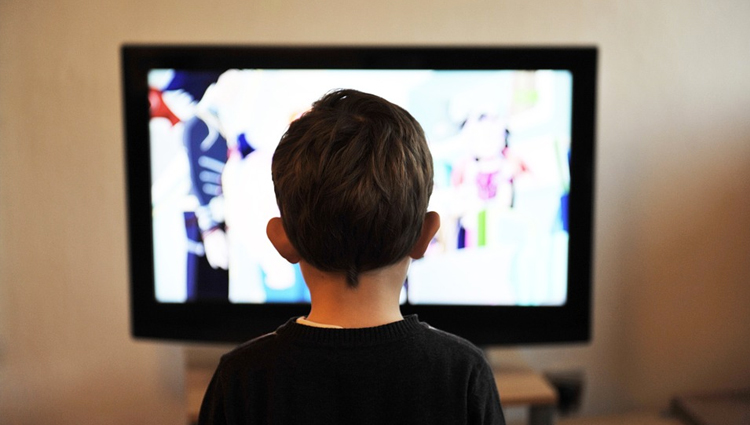Reducing the Volume of TV Ads

WASHINGTON -- Every year, television networks receive thousands of complaints from viewers bothered by commercials that seem to be getting louder and louder. They're tired of fumbling for the remote control and having the quiet moments in their romantic films spoiled by ads that sound louder than the loudest blockbuster movie explosions.
All of this may soon change. A technical organization that sets standards for digital TV broadcasters moved forward on Sept. 16 with new recommendations that may finally dial down the volume of these obnoxious ads.
"It's a problem that's been around for awhile not only in analog TV but also in FM radio," said Mark Richer, president of Advanced Television Systems Committee, the same organization that developed the standards for digital video formats now used by all broadcasters in North America.
The new audio recommendations, soon to be sent out to broadcasters for approval, provide a way to measure the loudness of television content based on current scientific understandings of how human hearing works. Shows and commercials would be tagged with information about their loudness that TVs and audio receivers could use to counteract the audio tricks that make commercials jump out at us.
"It achieves results similar to a viewer using a remote control to set a comfortable volume between disparate TV programs, commercials, and channel changing transitions," reads the working draft of the ATSC document.
Crashing Waves
Analyzing the sounds that accompany a television program or commercial is like spending a day at the beach watching the waves roll in. If asked how the waves were that day, a beachgoer could describe the biggest wave of the day or average all of the waves -- big and small.
The Federal Communications Commission -- the government agency that regulates the radio, television and cable industries -- limits only the size of the biggest sound wave, the "peak level" of the sound. Under FCC rules, the peak of a commercial can be no higher than the programming it accompanies.
The problem with this approach is that the peak level of the sound does not accurately reflect how loud something sounds to the listener. Our brains judge loudness by averaging all of the waves that roll by -- big and small.
"Human beings sum up the energy of the sound over a period of time while we listen," said Jack Randorff, an acoustics consultant at Randorff and Associates in Ransom Canyon, Texas.
Randorff said that audio engineers can find ways to get around the FCC rules by making commercials seem louder without actually increasing the peak levels of the loudest parts.
One way they do this is to use a trick called "dynamic range compression," which amplifies the softest sounds. This decreases the difference in size between the biggest and smallest waves. Compressed sound bombards the ear with more energy over a given period of time, audio that sounds flatter but louder.
"If TV shows minimized the dynamic range the way the advertisers did, it would be really unpleasant and unnatural to listen to," said Greg Lukens, former governor of the National Academy of Recording Arts and Sciences, which gives out the Grammy awards. "But the commercials only last a minute, and they want to catch our attention."
The problem is made even worse by the recent switch to digital television, which can produce a greater range of sound than analog. This exacerbates the difference between television programs, which use the full range of sound, and commercials, which squeeze the sound and push it upwards.
Audio engineers also recognize that human beings have evolved to pay more attention to certain pitches that have been important for our survival.
"We are most sensitive in the mid-range, in the range of babies crying," said David Weinberg, chair of the Washington D.C. chapter of the Audio Engineering Society.
Experiments have shown that low and high pitches tend to sound softer, and advertisers exploit this by adjusting the mix to favor certain frequencies without changing the overall volume.
Another effective technique, said Weinberg, is to add distortion by cutting off small pieces of the sound. Ben Burtt used this technique when mixing the soundtrack for Apollo 13 to give the sound of the Saturn V lift-off an extra kick.
Ear of the Beholder
In 2001, the International Telecommunication Union recognized that the broadcast industry needed a better way to measure loudness. A series of studies asked volunteers to listen to a variety of 15 to 30 second television clips -- cut from soap operas, news, music, and sports broadcasts -- and to rate how loud each clip sounded. A contest was held to develop a device that could measure the loudness of the clips in way that would match the human perceptions.
A group at Communication Research Centre Canada won, with a computer algorithm that cuts out the lowest tones -- the ones that we tend to ignore -- and adds together the higher frequencies over the entire clip's sound.
"The number you get is a good measurement of long-term loudness," said Louis Thibault, an audio engineer at the CRC. "Our loudness meter will tell you difference between compressed [commercial] and an uncompressed signal."
The new ATSC recommendations, which use the Canadian loudness meter, are entirely voluntary. But ATSC President Richer is confident that broadcasters will adopt them. "Broadcasters want to do things in a uniform way," he said. "Because our membership is broad -- all of the major networks, many of the other broadcast groups, and also the manufacturers -- we get a lot of buy-in to what we do."
Meanwhile, Congresswoman Anna Eshoo of California's 14th Congressional District has been pushing for new federal regulations. Her Commercial Advertisement Loudness Mitigation Act, H.R. 1084, would require the FCC to create legally-binding recommendations. An identical bill last year never came up for a vote, but her office believes that it is important to have an enforcement mechanism, especially because the cable and satellite providers are not members of the ATSC.
While government and industry continues to work out the loudness issue, television watchers who are bothered by booming commercials can shell out extra cash to buy special audio receivers and televisions equipped with a technology called Dolby Volume. These devices, created by the Dolby Laboratories in California, monitor and adjust loudness in real-time, using Dolby's own model of human hearing.
Of course, viewers can always stick to the traditional, tried-and-true method -- pushing the mute button.

